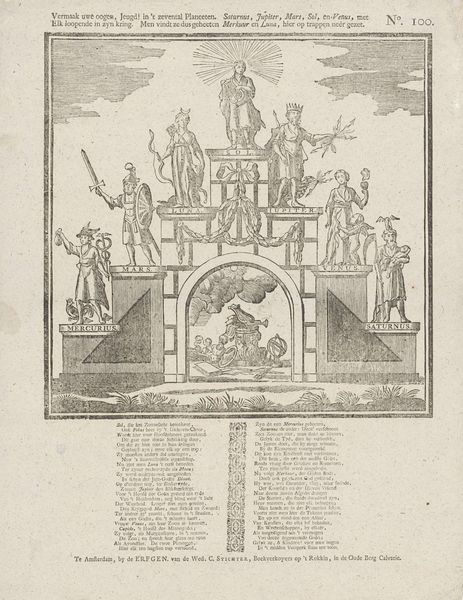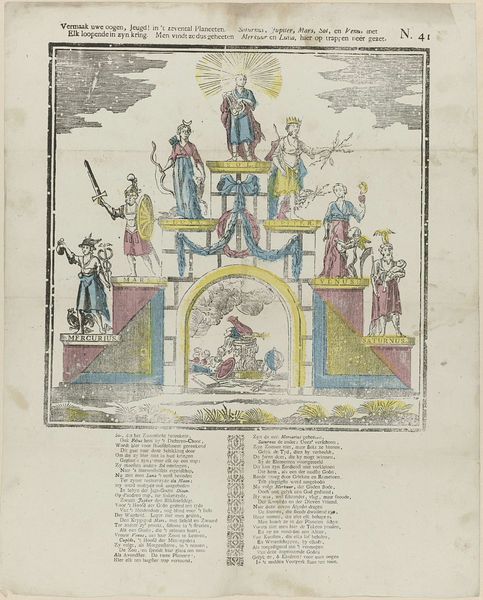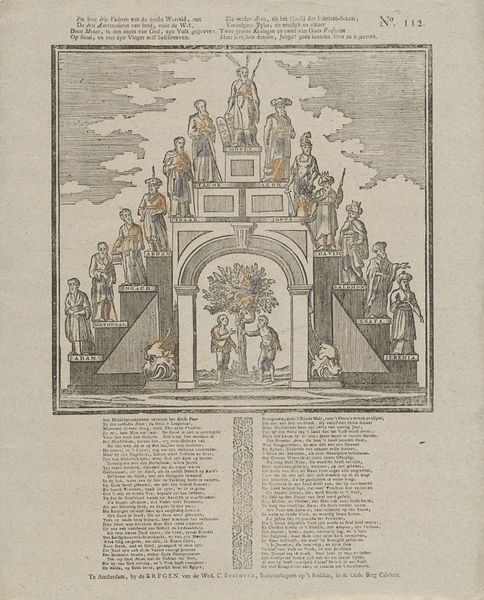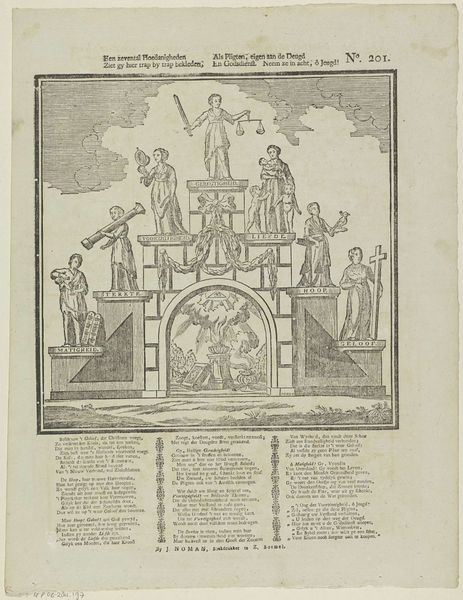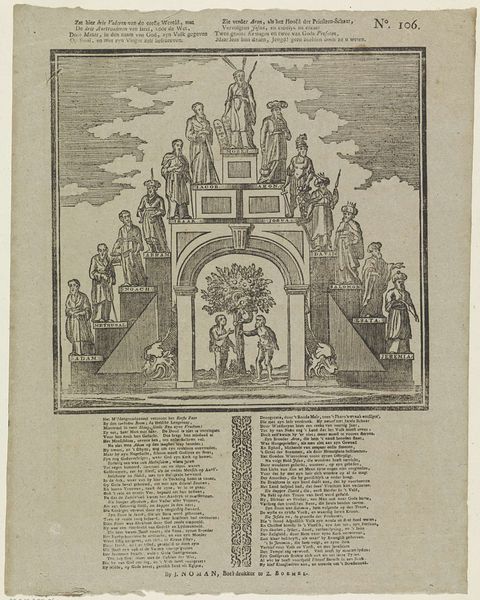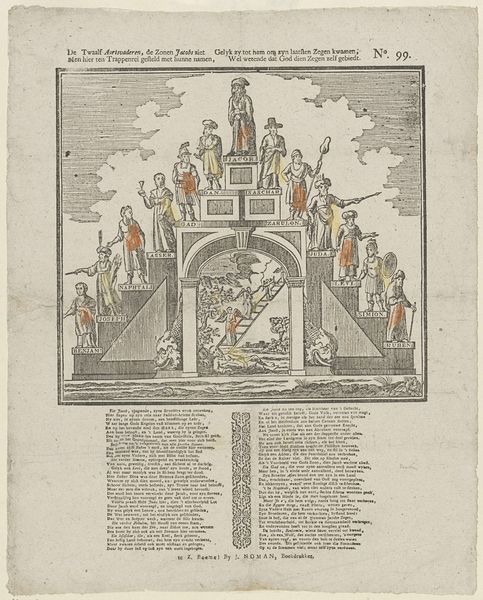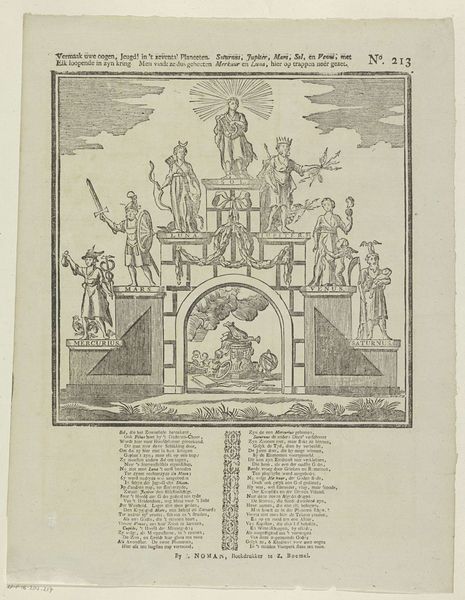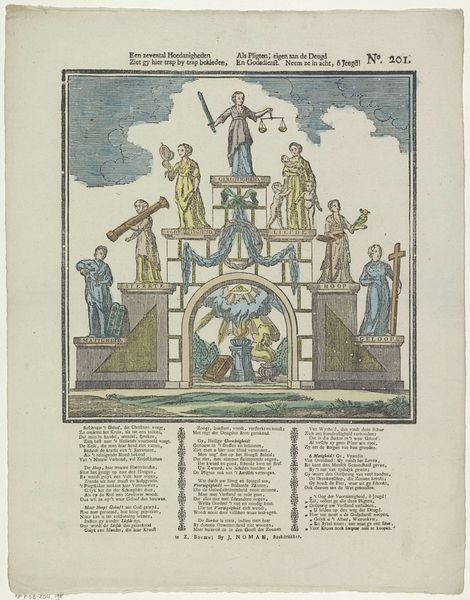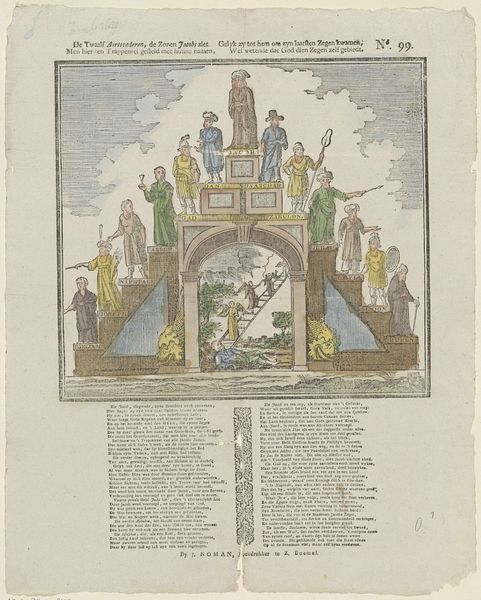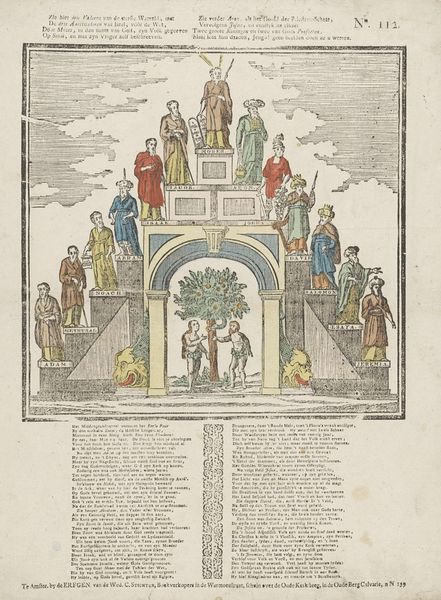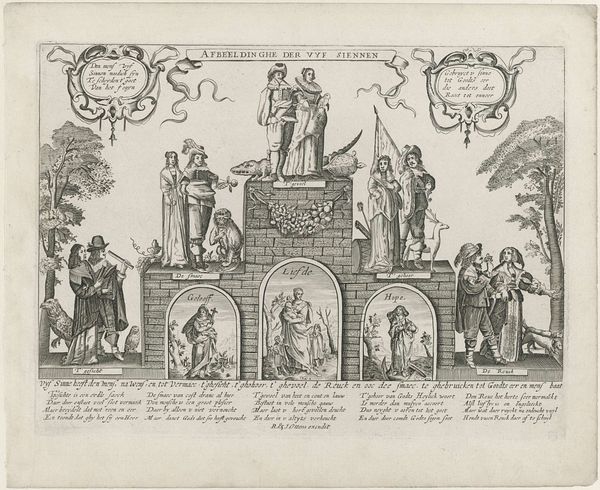
Een zevental hoedanigheden / Ziet gy hier trap by trap bekleden, / Als pligten, eigen aan de deugd / En Godsdienst neem ze in acht, ô jeugd! 1715 - 1813
0:00
0:00
arobyn
Rijksmuseum
Dimensions: height 384 mm, width 274 mm
Copyright: Rijks Museum: Open Domain
Curator: This print, titled "Een zevental hoedanigheden," translates to "A Septet of Qualities," and it comes to us from somewhere between 1715 and 1813, a product of A. Robyn. It’s currently held in the Rijksmuseum. It’s immediately striking, isn’t it? Editor: Yes, quite. There’s a kind of severe elegance to its symmetrical arrangement, a bit stark for my taste but clearly very intentional. Almost like a... diagram? The figures are neatly placed like components. Curator: Exactly. Note how Robyn employs engraving here, mass-producing an image steeped in allegory. We must ask about the paper used. Was it readily available? Is there evidence of a workshop or apprenticeship situation? Who was buying prints at the time and why? It’s all connected: the materials, the artist's labour, the intended consumer, all inform how meaning is encoded and circulated in baroque society. Editor: I find it more interesting that the "qualities" presented form a symbolic architecture. Each represents a virtue, layered from 'Matigheid', or Moderation, at the base, up to 'Geregtigheid', or Justice, at the apex, balanced by scales and sword. What is Robyn trying to build here, and is it meant to impress or is it meant to teach? Curator: I think there is much that suggests something both impressive and instructional in a very pragmatic way. What can this engraving tell us about production and consumption of printed imagery during this time? Was the choice of paper stock determined by aesthetic reasons, or economics? How did it effect the durability of the art work and hence, the circulation of these ideals? Editor: The composition mimics, perhaps intentionally, a moral ladder towards enlightenment or God, beginning with earthy concerns of Moderation, proceeding through stages of Hope, Charity, and culminating in the balance of Law at the very top. There’s definitely a religious theme hinted at at the bottom of the page that should be accounted for, given that era in history. Curator: True. And it might very well speak to the values of the artisan as much as its commissioners or eventual owner. An engraved line can evoke power and virtue, but this print's survival over centuries tells a bigger tale: about the material conditions of art creation and preservation. Editor: I am curious as to how modern-day consumers or scholars of history and/or symbolism read and interpret an artwork such as this one; an allegory is always prone to adaptation depending on what one may be interested in gaining. Thank you for sharing the opportunity to dissect this image and create some questions about its role, purpose and, above all, significance.
Comments
No comments
Be the first to comment and join the conversation on the ultimate creative platform.
